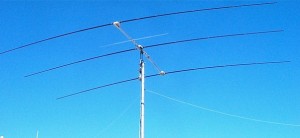The contest season has truly begun……
I hope to make my first full contesting season as a ham a truly memorable one, by giving each contest a fair crack of the whip, or that’s the plan!
Last months CQ WW RTTY contest was a chance to brush up on my RTTY contesting skills, something which I hadn’t done in months. I’m a sideband man as you probably know, but RTTY contesting sharpens your speed and skills even if it is not my preferred contesting mode.
I also use it as a chance to hone my knowledge of the station and antennas at VE7NSR, my home from home during the contesting season. Contesting at VE7NSR is a usually a casual affair for most of the us (we usually enter as a Multi-One), though at least we set goals to better the previous years performances. However as my confidence in operating grows it is nice to set some personal goals vis-a-vis rates/hour etc etc. As a station we are limited by location and many other factors but I think as a part-time outfit I think we do a great job.
Following on from the CQ WW RTTY, I Single-Op’d in the CA QP, using the chance to try out a some of the other radios in the station. The main HF position at VE7NSR is an Icom Pro III but we also have an IC-718 and an HF capable IC-7000. I like the IC-7000, in some ways the DSP is better in the IC7K than in the Pro III. The dual-variable manual notch filters in IC7K beats anything the Pro III has. It really is a very good all round radio, I think it has caught my eye and very soon maybe my wallet too. Right now I’m just imagining it perched on top of my IC-1500, a match made in heaven.
Having got into the spirit of all things RTTY, VE7NSR’s next assignment was the Makrothen RTTY contest. The Makrothen is a fun and unusual contest. It’s scoring system is based on distances and the 24hr operating time is split up over three 8 hour segments, making this a very XYL friendly contest. I op’d all of the Saturday segment finishing at a respectable 5pm. I also logged the final hour of the overnight third segment on the Sunday morning, picking up some well needed European mults on 20m. With no other ops present I really learned some lessons in contest strategizing, breaks? band changes? band openings? etc. Becoming situationally aware of the contest as a whole is paramount, sometimes seeing the ‘bigger picture’ will make life easier and save valuable time. A lesson well learned during the Makrothen.
This weekend past was the JARTS RTTY. We entered as a Multi-Op station with four on the team this time round. I feel there is a definite sea change in band conditions compared to last year. Though we always usually enter as a HP station I can only operate within the limits of the Basic+ Cert. if there is no Advanced level op around. That means 100w barefoot as the PA is setup for 300w+ on RTTY. Industry Canada limits non sideband modes to 190w carrier power for Basic Certificate holders. But even with 100w this past weekend there were lots of DX stations to work, the highlight being (for me at least!), UN1L in Kazakhstan. 100w transpolar, no problem.
All of this though is only a warm up to the grand-daddy of contests, the one I have been looking forward to for quite sometime, the CQ WW DX SSB. There should be plenty of interest, so lets hope we have lots of keen hams on the team.
Keep an out for our recent and future contest scores on the 3830 list. I’ve been posting mine and VE7NSR’s there lately, a great way to see how you size up to the big boys!


